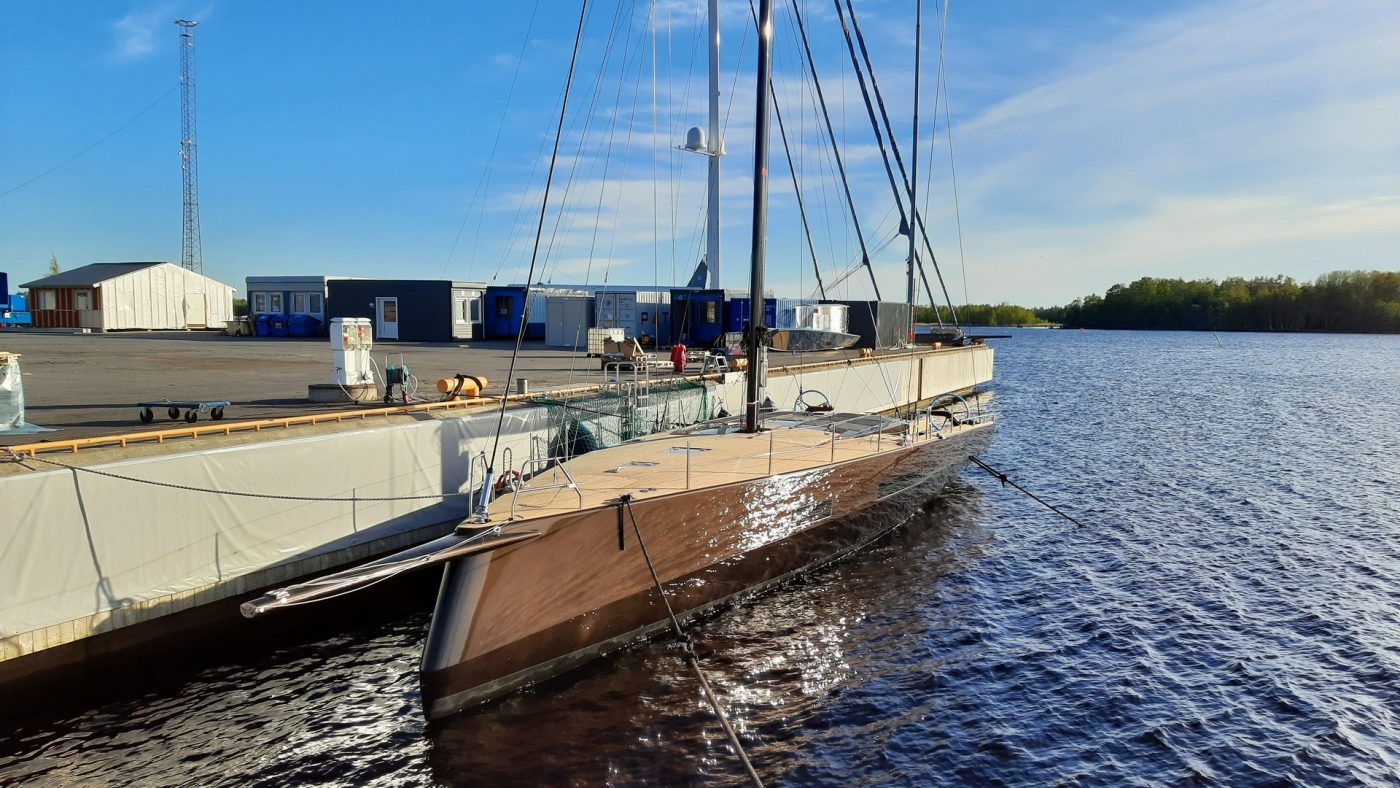
Stunning Café Racer offers ease of use, style and sustainability
2 June 2021
The first Baltic 68 Café Racer was launched on schedule last week when her super-stylish looks were revealed, her ease of use demonstrated and a new era of low carbon footprint yacht building unveiled
With her flax-reinforced hull, eco-electric propulsion, easy to handle sail plan and stunning interior design, the first Baltic 68 Café Racer offers a stylish, sustainable, performance sailing experience.
Following her recent launch, the yacht will undertake trials off Jakobstad before heading for the Mediterranean where she will be available for viewing and aim to take part in September’s Les Voiles de St Tropez.
Primarily, the Café Racer provides clients with pleasurable performance sailing through ease of handling and the latest rig and sail technology. Combined with a reduced carbon footprint, using naturally grown building materials, eco-electric propulsion and a hydrogeneration system, the Café Racer continues to lead Baltic into a new era of yacht building.
Naval architect Javier Jaudenes explains
This is a yacht for owners and their friends who want their sailing exciting, easy and enjoyable. When the mood takes them, the Café Racer is ready to GO! This is the essential modern weekender with a genuinely ‘green’ approach to construction and auxiliary power
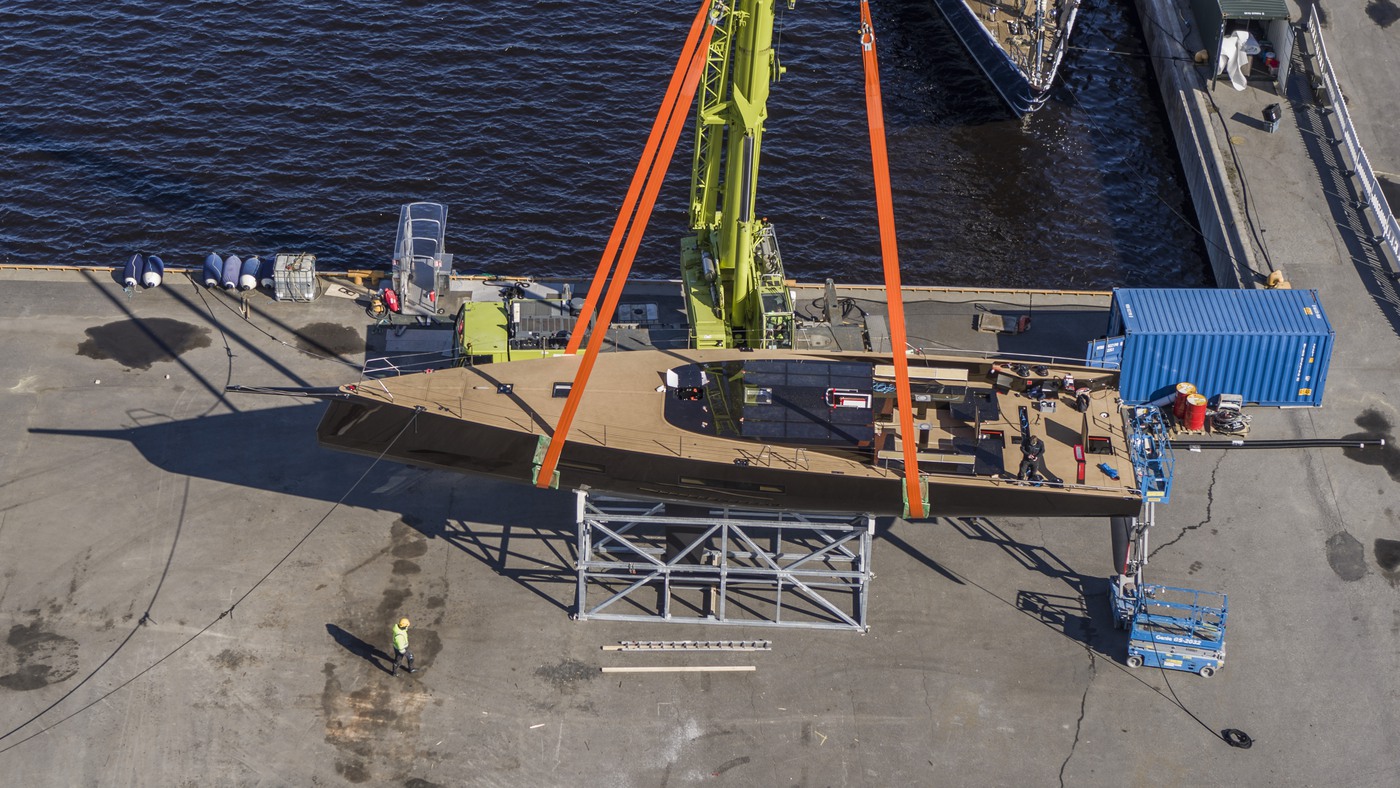
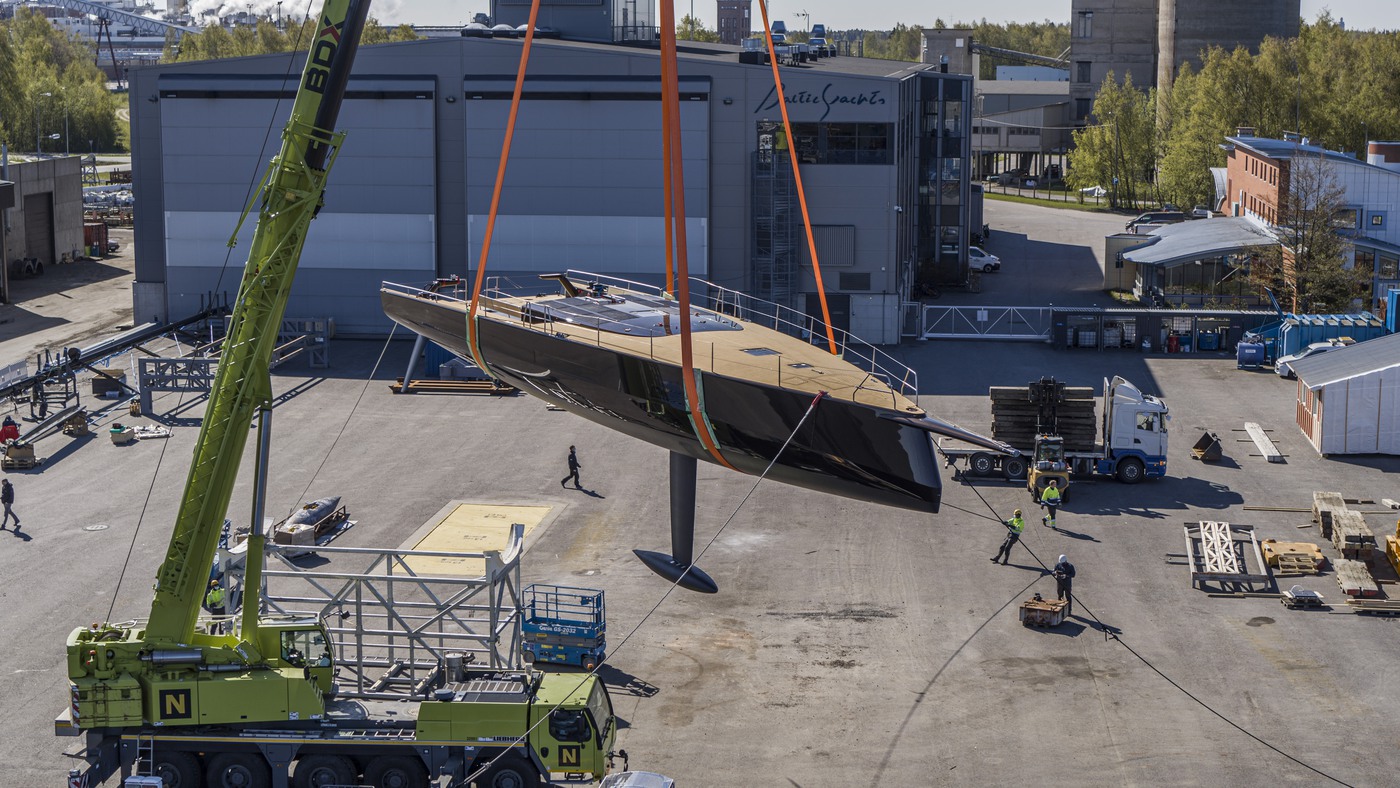
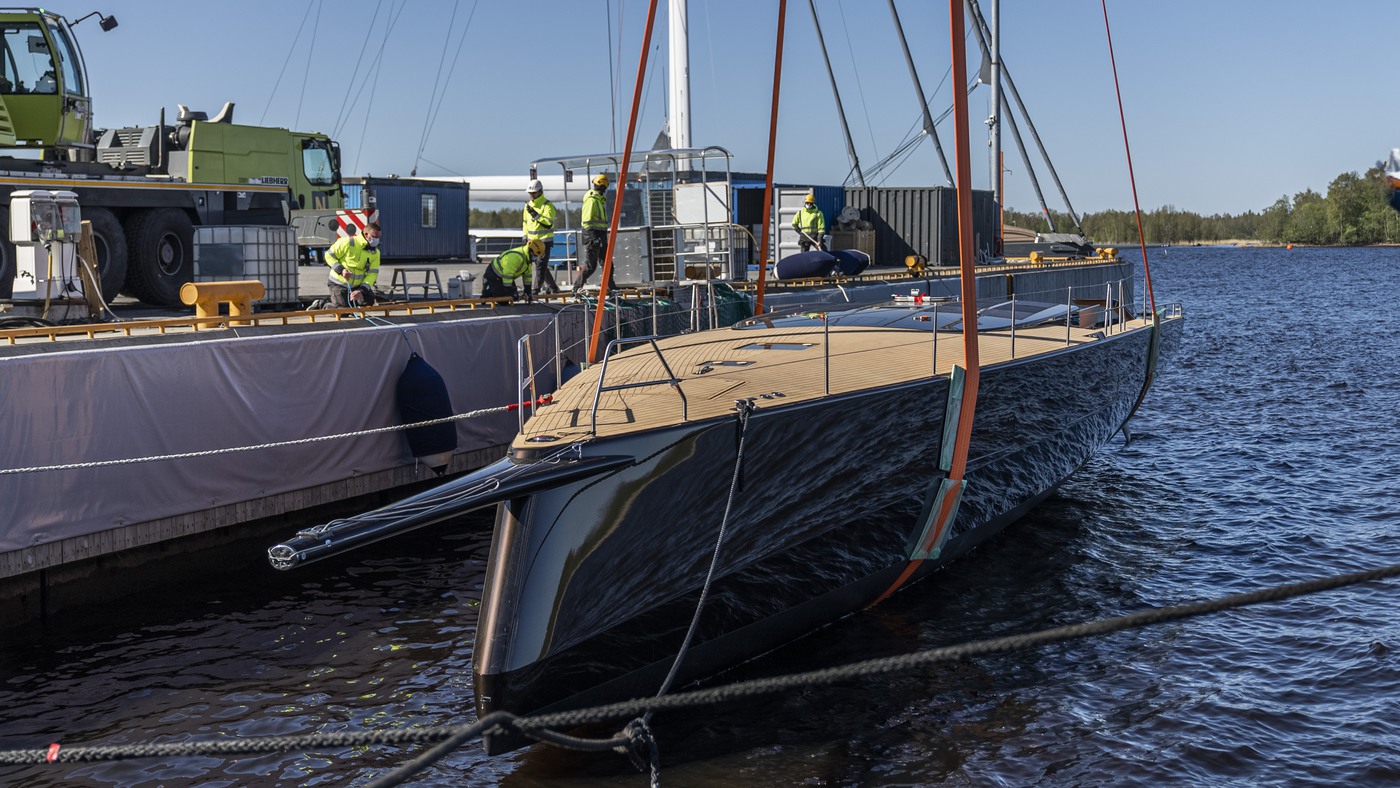
Buying into a modern package
Baltic Yachts Executive Vice President, Henry Hawkins, said:
This is a yacht which tackles today’s challenges of sustainability and low carbon targets head on – she’s fun and easy to handle, offering a genuinely rewarding sailing experience. Baltic’s engineers and partners have incorporated a brilliant, naturally grown yacht building material in sustainable flax which perfectly complements the advanced composites expertise for which the company is renowned.
“We’re confident the Baltic 68 Café Racer Class offers a modern, attractive package which clients will be keen to buy into,” he said. “We are also exploring the possibility of a ‘green’ rating advantage to encourage the use of sustainable materials in yacht building,” he added.
Naturally grown boat building materials
Some 50% of the Café Racer’s hull and deck mouldings use Bcomp’s ampliTexTM naturally grown flax as a reinforcement. A SPRINT pre-preg lamination technique developed by Gurit is being used in this instance. Flax dramatically reduces the overall carbon footprint of the build and works well in conjunction with more conventional advanced composites, which are still used throughout the structure.
An extensive array of solar panels will be fitted to the yacht’s superstructure providing sufficient power to run onboard systems, including refrigeration. Sustainably grown Marinedeck cork replaces teak for the Café Racer’s decking material.
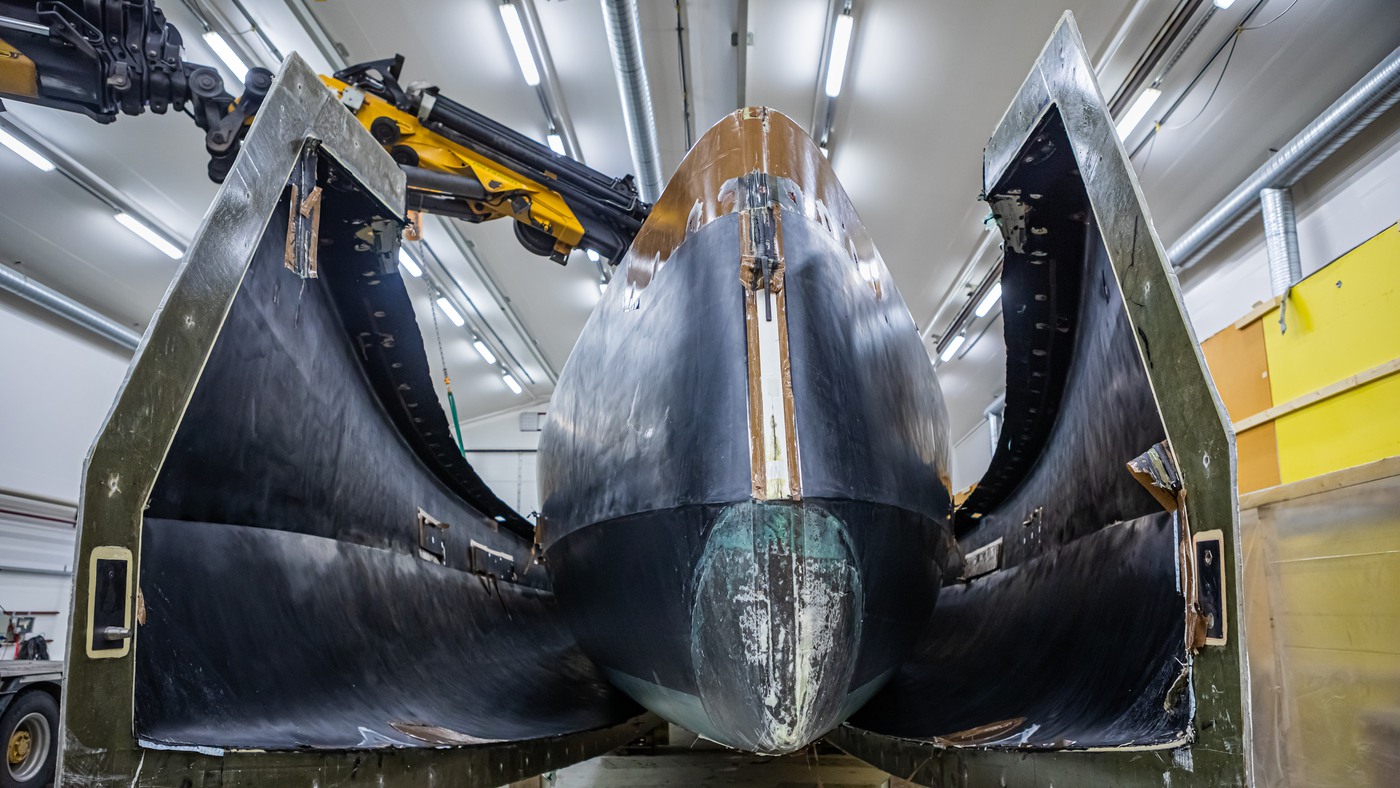
Rig and sail technology makes sailing easier
Making the Café Racer easy to sail is key to the new yacht. The Baltic 68 Café Racer employs some of the latest thinking in rig and sail technology to make handling easier. Thanks to a Marstrom Composite mast, with its swept back spreaders and wide shroud base, there are no runners or backstays to worry about.
Gybing and tacking, even with a square top main, require only sheet control with no runners, checkstays or running backstays to complicate life! But there is still a lot of performance on offer.
The way luff load is distributed using Doyle’s Structured Luff Technology plays a critical role in the overall rig and sailplan equation. The rig concept draws on existing technology based on the Bergstrom/Ridder, swept spreader designs from the 1980s. The spreader sweep provides the mast’s aft support that backstays would normally provide. Modern materials linked with Doyle Sails’ Structured Luff technology, Carbo-Link’s carbon standing rigging and the stiffness provided by the advanced composites used in the Café Racer’s hull, mean the advantages of the system can be fully realised without compromising performance.
Torbjörn Linderson, head of the mast department at Marstrom Composite AB in Sweden said:
A key objective is to extract performance from this sailing machine, but it must be easy, safe and enjoyable to achieve and not just for the fully professional sailor.
The use of Doyle Structured Luff Technology means that the sails themselves are designed with reinforcement in the luff area which spreads the load into the sail itself to avoid having to impose large headstay tension to reduce luff sag. It is ideally suited to the backstay-less Marstrom rig.
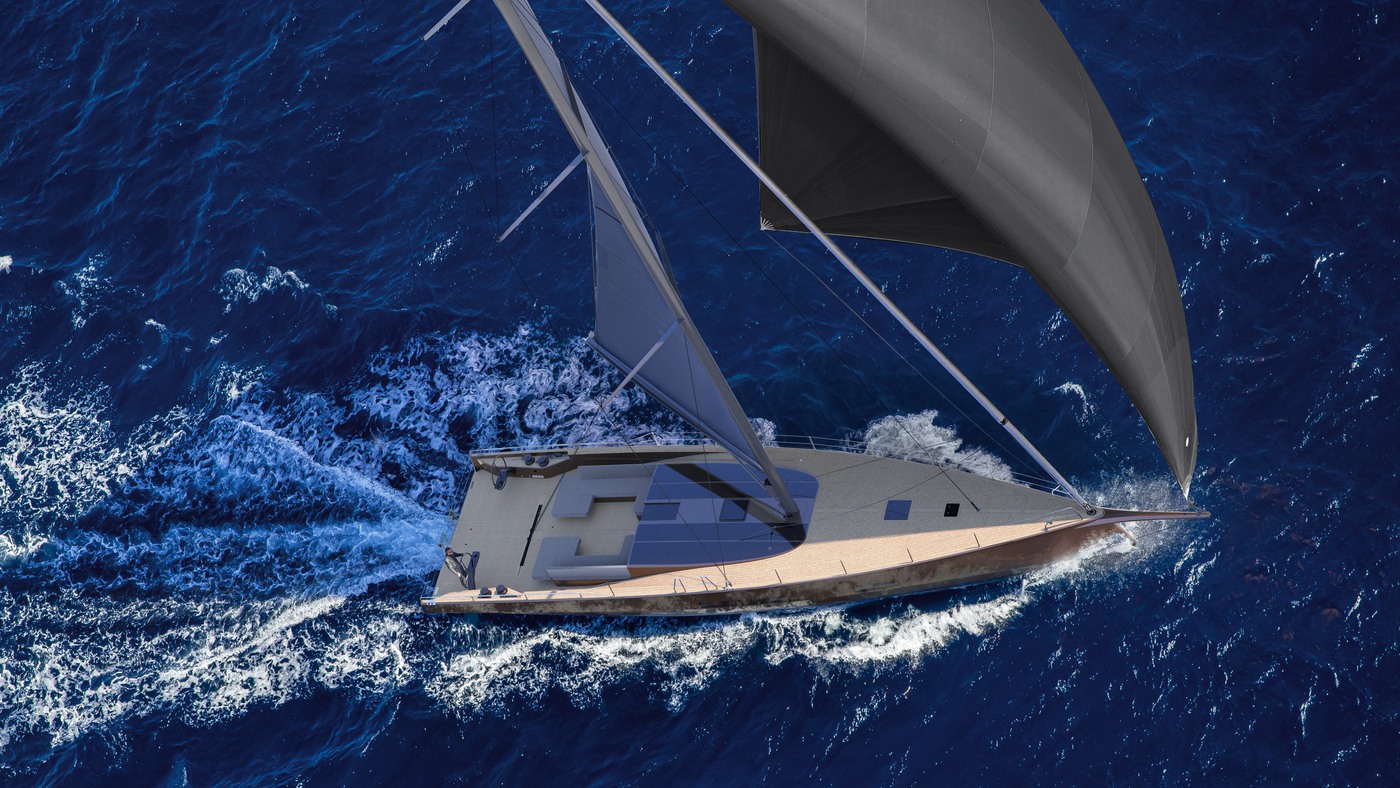
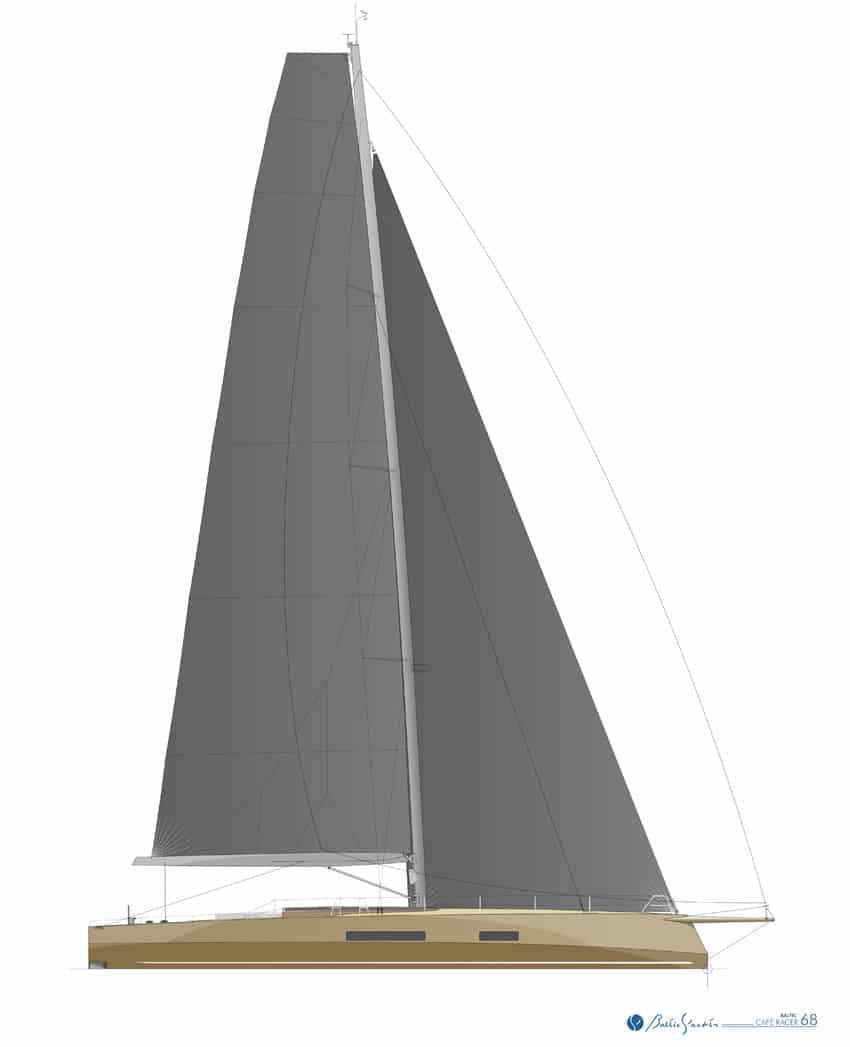
Doyle Sails’ Global Superyacht Sales Manager, Scott Zebny, said:
“For the Café Racer without any backstays, the real benefit from structured luff technology is the fact that we don’t have to pull on the headstay as hard in order to achieve the same amount of headstay sag. All of our modelling together with Marstrom’s shows that we can achieve acceptable amounts of headstay sag with the way the mast has been engineered making tacking really very easy for day sailing”.
Doyle Sails International’s chief operating officer, Emma Hendy, said:
“Reducing luff sag in one of the biggest factors in allowing our sails to achieve more driving force. In some instances, we are reducing loads by up to 50%.”
When it comes to mainsail control, Doyle’s Structured Luff Technology provides so much load bearing ability in the sail itself that powerful luff Cunningham adjustment can be used to induce sail shape in lieu of backstays and runners.
The Doyle technology reduces weight, makes sails much more efficient and more user-friendly to trim.
Also key is Carbo-Link carbon fibre standing rigging, in this case CL ELLIPSE, which is aerodynamically profiled for an additional performance edge.
Torbjörn Linderson explained: “The modern composite hull structure of the Baltic 68 Café Racer has allowed us to do away with the reverse diagonal (stay) as well as slightly reducing spreader sweep from the typical 30° used by the B&R rig to 28°. A key here is stiff rigging, where the penalty in terms of weight and drag is greatly reduced using Carbo-Link’s CL ELLIPSE rigging, packing stiffness into a small and aerodynamic format.”
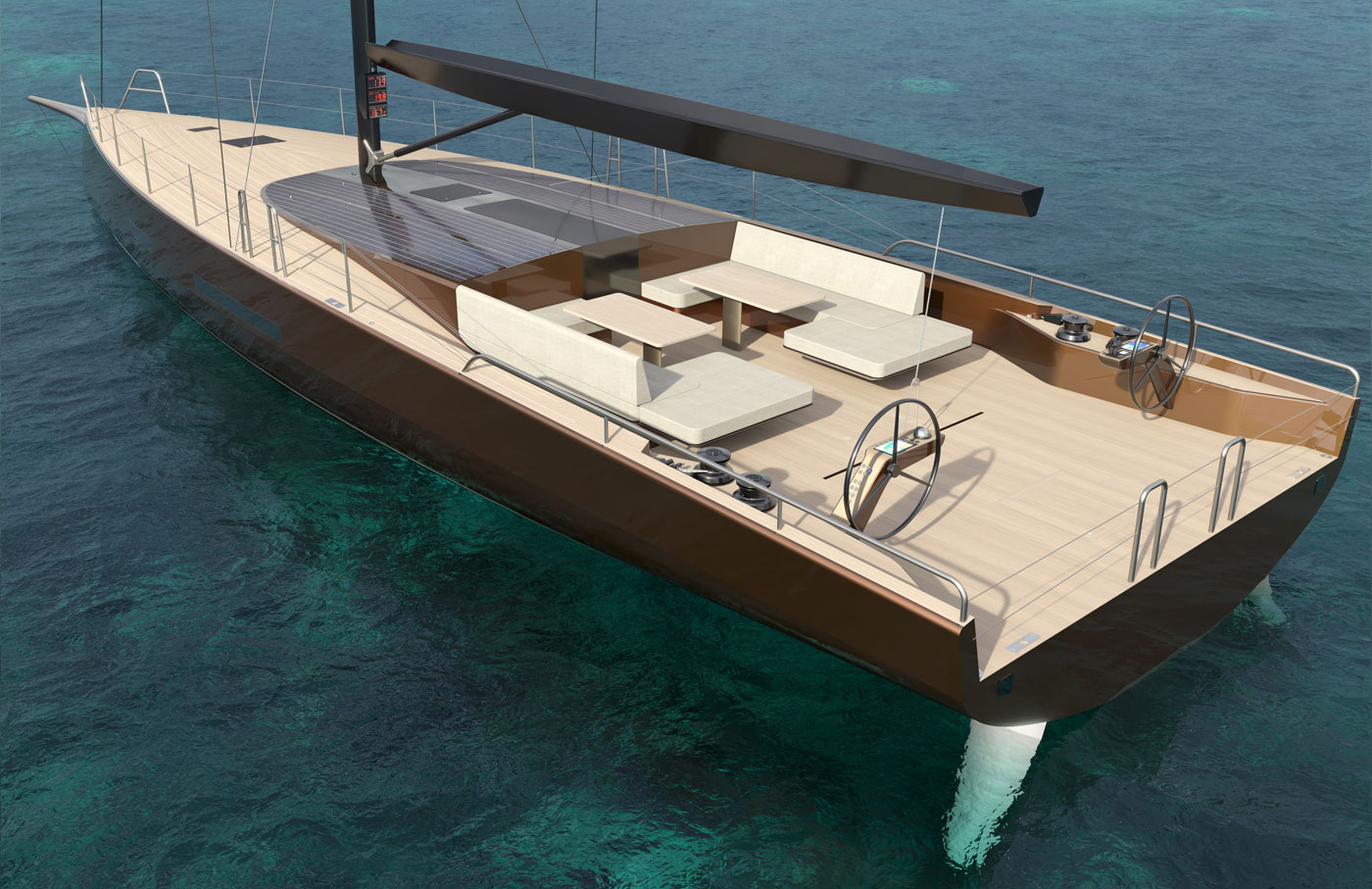
All electric Café Racer
Under power the Café Racer is driven by twin 15kW Oceanvolt electric motors with saildrive-style legs. While sailing, the free-wheeling propellers can, if selected, drive the motors as generators, which in turn charge the Lithium battery banks. The previously mentioned solar panels add to the charging capability and there’s also a range extender using micro-turbine technology which will eventually be powered by biofuels or hydrogen. So, it’s a genuine good-bye to the internal combustion engine.
Stunning interior styling
If the Baltic 68 Café Racer’s external looks excite you then her interior styling options will blow you away!
Jens Paulus and naval architect Javier Jaudenes offer a contemporary style using a range of eco-materials like flax, linen and leather. “It’s a contemporary interior embracing the eco-spirit of the Café Racer. One of the main ideas behind the interior is to show as much as possible the shape of the hull and intensify that unique feeling of being inside a boat,” said Jens.
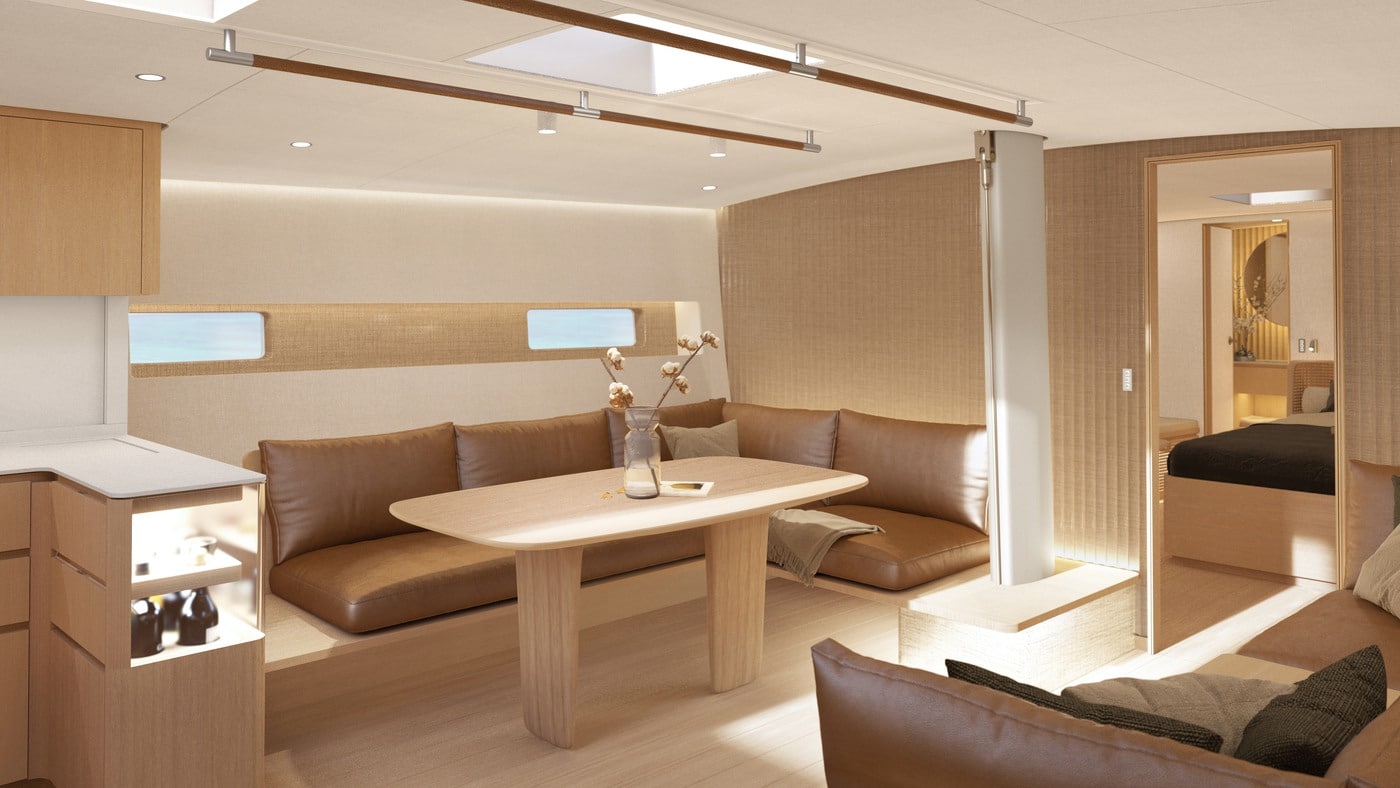
Alternatively, Design Unlimited has chosen to capitalise on both the yacht’s eco-credentials and Café Racer-with-attitude approach with an impressive choice of colour palettes, material choices and concepts. Mark Tucker from DU said:
“The Café Racer’s accommodation offers a comfortable and cosy place to relax after a day’s sailing. Our style options provide an appealing welcome and a great place to enjoy a good lunch after some excitement out on the water!”
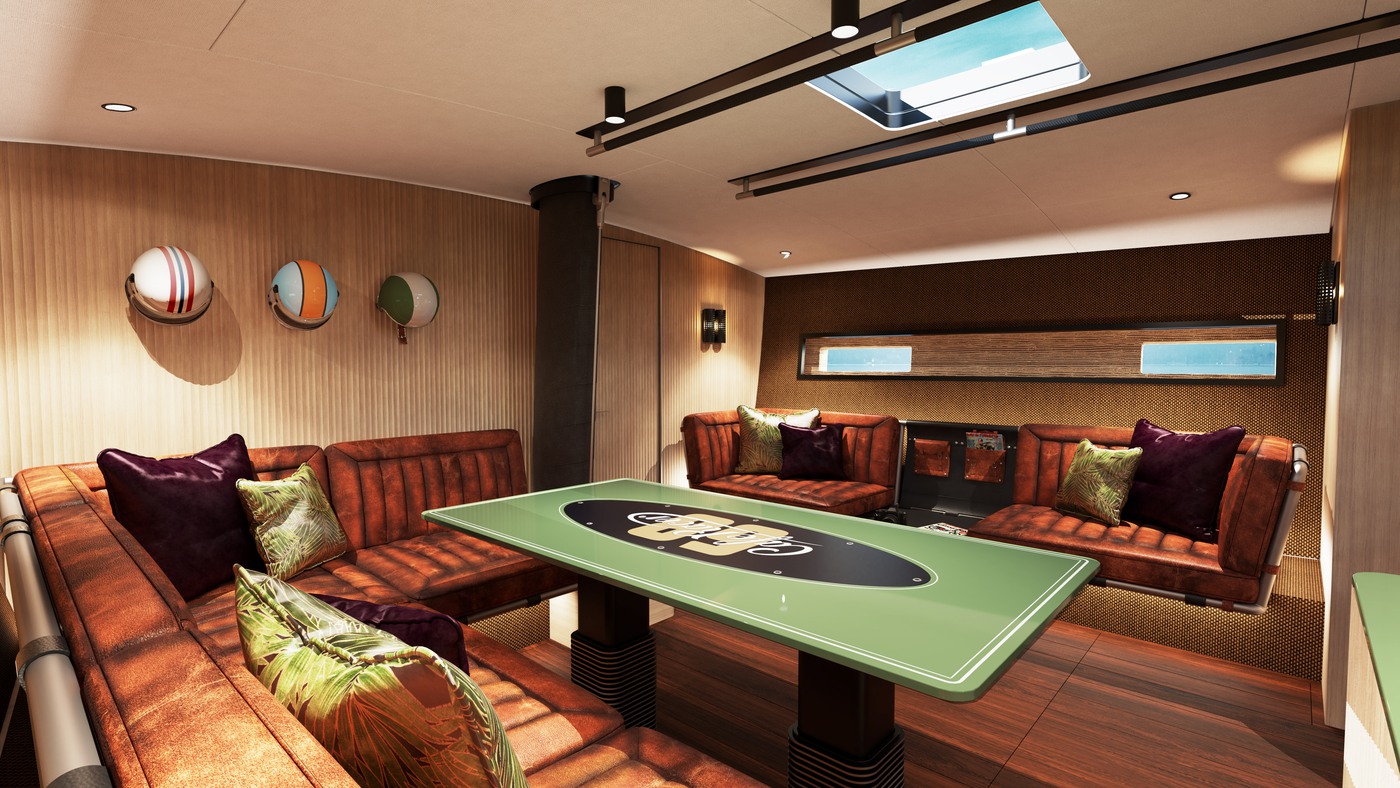
The client for the first Café Racer has chosen a fresh look (below), using fabric and light timber bulkhead finishes, light oak flooring and leather handrail detailing, again by Design Unlimited.
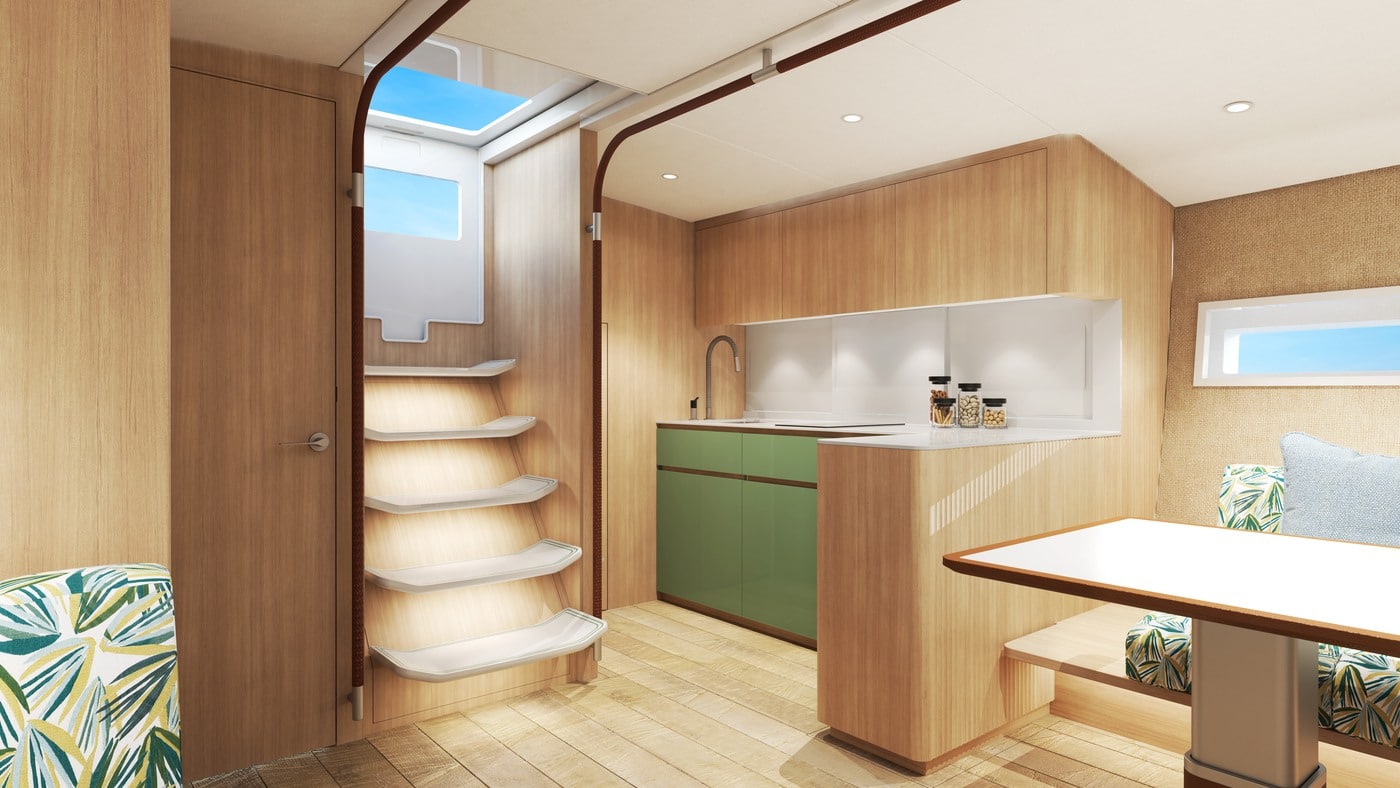
For performance and weight saving, the ends of the yacht are virtually empty with the main saloon forming the focal point of the accommodation and a large owner’s double cabin located just forward. An additional double berth is located to starboard, aft of the companionway.
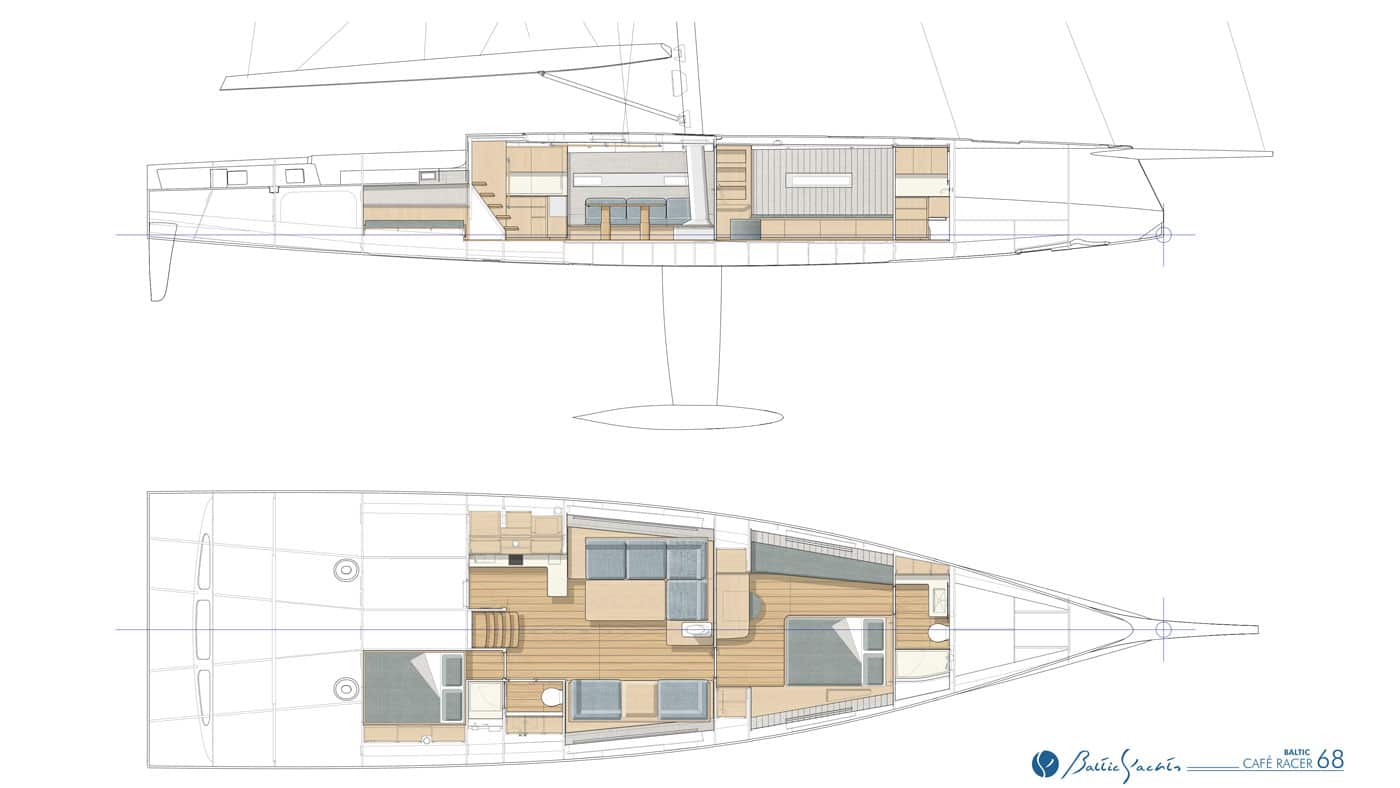
Following trials in Finland, the first Café Racer will head for the Mediterranean where she will be attending events in Sardinia and the Cote d’Azur. Details of plans to be at the Cannes Yachting Festival and the Monaco Yacht Show will be published at a later date when COVID-19 restrictions are eased.
Key features
- Gets you sailing quickly and easily
- Stunning interior options
- Sustainability package includes:
- Hull made using naturally grown flax and carbon
- Cork decks
- Twin electric propulsion motors
- Hydrogeneration
- Micro-turbine range extender
- Eco air-con
- Powerful and genuinely easy to handle sailplan
- Marstrom rig with no runners or backstays
- Doyle Structured Sail Technology reduces rig loads
- Carbo-Link aerodynamic carbon rigging
- Press-button sail handling
- Unplug-and-go lithium battery power
- Twin rudders for control
- Fixed keel for simplicity
- Naval architecture by Javier Jaudenes
- Interior styling options by Javier Jaudenes/ Jens Paulus combination and Design Unlimited
DIMENSIONS:
LOA 20.73 m (22.66m with bowsprit)
LWL 20.73 m
BEAM 5.63 m
DRAFT 4.00 m
DISPLACEMENT: 22,800 kg
BALLAST: 8.200 kg
The Baltic 68 Café Racer was transported to our waterfront facilities and launched successfully end of May.
LEARN MORE
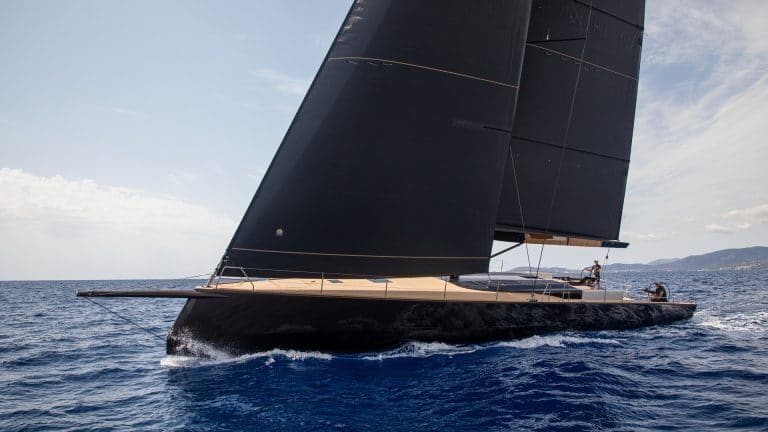
Baltic 68 Café Racer Pink Gin Verde
Designed to deliver an electrifying performance in more ways than one, this easy to handle daysailer is boosted by green...
MORE